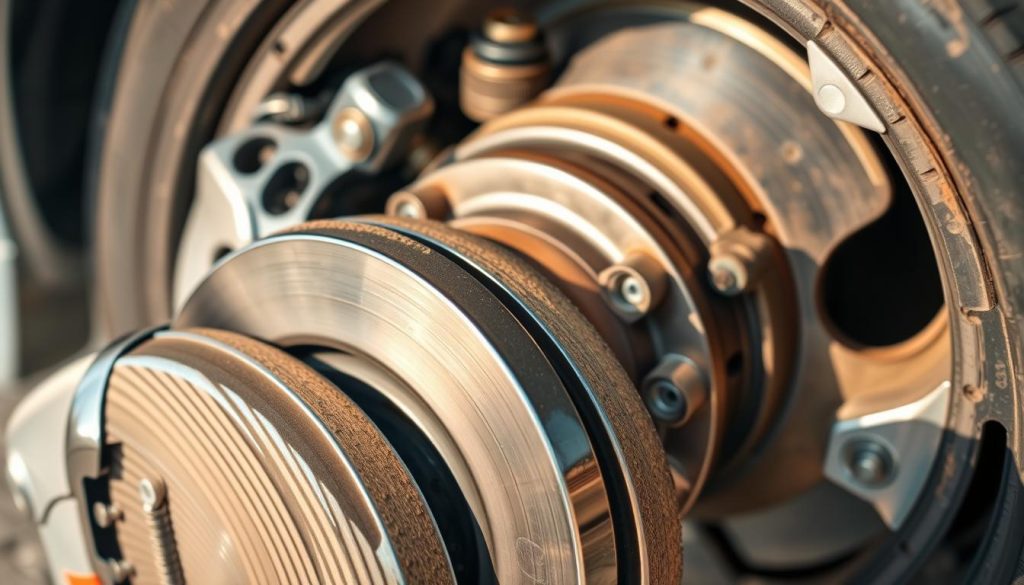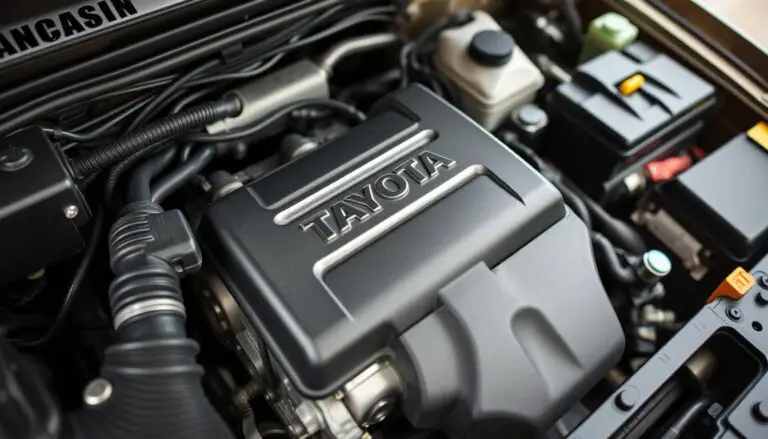Replacing brake pads is a crucial maintenance task for ensuring vehicle safety and performance. Worn-out brake pads can lead to reduced stopping power, increased risk of accidents, and costly repairs down the line. If you’re wondering how to replace your Toyota’s brake pads, you’ve come to the right place. This article will guide you through the process, covering both the cost and the steps involved in DIY brake pad replacement.
By following this guide, you’ll be able to identify the symptoms of worn-out brake pads, understand the replacement process, and learn how to do it yourself. Whether you’re a seasoned DIY enthusiast or a car owner looking to save on repair costs, this article will provide you with the necessary information to get the job done.
Key Takeaways
- Understand the importance of replacing brake pads for vehicle safety.
- Learn the symptoms of worn-out brake pads.
- Follow a step-by-step guide on DIY brake pad replacement.
- Discover the cost implications of replacing brake pads.
- Identify the benefits of replacing brake pads in pairs.
Understanding Toyota Brake Pad Replacement
Understanding the process and importance of brake pad replacement can save Toyota owners time and money. Brake pad replacement is a critical maintenance task that ensures the safety and performance of your vehicle.
Signs You Need New Brake Pads
Identifying the signs that indicate worn-out brake pads is crucial for timely replacement. Common indicators include:
- Squealing or grinding noises when applying the brakes
- Vibrations or pulsations felt through the brake pedal
- A noticeable decrease in braking performance
If you experience any of these symptoms, it’s essential to inspect your brake pads and consider replacement if necessary.
The Importance of Timely Replacement
Timely brake pad replacement is vital for maintaining your vehicle’s safety. Worn-out brake pads can lead to reduced stopping power, potentially causing accidents. According to safety guidelines, neglecting brake pad replacement can result in more costly repairs down the line, including damage to rotors and calipers.
“Neglecting brake maintenance can have serious consequences, including increased stopping distances and the risk of accidents.” This emphasizes the importance of regular checks and maintenance.
Benefits of DIY Brake Pad Replacement
Replacing brake pads yourself can be cost-effective and rewarding. By doing it yourself, you can save on labor costs, which can be substantial. For more information on the cost of brake pad replacement, you can visit this resource to understand the costs involved.
Additionally, DIY replacement allows you to gain hands-on experience with your vehicle, potentially identifying other maintenance needs early on.
Key benefits of DIY brake pad replacement include:
- Cost savings on labor
- Increased familiarity with your vehicle’s maintenance needs
- The satisfaction of completing a maintenance task yourself
Toyota Brake Pad Replacement Cost Breakdown
Toyota brake pad replacement costs can differ widely depending on whether you opt for a DIY approach or hire a professional mechanic. Understanding these costs is crucial for making informed decisions about your vehicle’s maintenance.
DIY vs. Professional Service Costs
When considering brake pad replacement, one of the primary decisions is whether to undertake the task yourself or hire a professional. The DIY approach can be cost-effective, with the main expense being the brake pads themselves, which can range from $25 to $50 per axle for aftermarket pads and $40 to $100 or more for OEM pads.
On the other hand, hiring a professional mechanic includes labor costs, which can significantly increase the total expense. Labor rates vary by location and mechanic, but on average, you can expect to pay between $100 to $200 per axle for labor, making the total cost range from $150 to $300 or more per axle, depending on the pads chosen.
Cost Factors by Toyota Model
The cost of brake pad replacement can also vary significantly depending on the Toyota model. Different models have different brake pad requirements, affecting the overall cost.
Camry, Corolla, and RAV4 Models
For popular models like the Camry, Corolla, and RAV4, the cost of brake pads tends to be on the lower end of the spectrum. On average, you can expect to pay between $30 to $60 per axle for aftermarket pads and $50 to $100 for OEM pads.
Tacoma, Tundra, and Highlander Models
Larger and more robust models like the Tacoma, Tundra, and Highlander require more substantial brake pads, which can increase the cost. For these models, aftermarket pads can cost between $50 to $100 per axle, while OEM pads can range from $80 to $150 or more.
| Toyota Model | Aftermarket Brake Pads Cost | OEM Brake Pads Cost |
|---|---|---|
| Camry, Corolla, RAV4 | $30-$60 per axle | $50-$100 per axle |
| Tacoma, Tundra, Highlander | $50-$100 per axle | $80-$150 per axle |
OEM vs. Aftermarket Brake Pad Options
Another critical factor affecting the cost is the choice between OEM and aftermarket brake pads. OEM pads are made to the manufacturer’s specifications, ensuring a precise fit and performance. While they are generally more expensive, they offer the assurance of quality and compatibility.
Aftermarket pads, on the other hand, can offer significant cost savings and a wider range of options. However, their quality can vary, and it’s essential to choose reputable brands to ensure reliability and performance.
In conclusion, the total cost of replacing Toyota brake pads depends on several factors, including the model, type of brake pads, and whether you choose a DIY or professional service. By understanding these factors, you can make informed decisions that fit your budget and maintenance needs.
Tools and Materials Needed for DIY Replacement
To successfully replace your Toyota’s brake pads, you’ll need to have the correct tools and materials on hand. This preparation is crucial for a smooth and safe DIY replacement process.
Essential Tools List
The following tools are necessary for replacing your Toyota’s brake pads:
- Lug Wrench or Socket Wrench for removing the wheels
- Caliper Piston Tool for compressing the brake caliper piston
- C-Clamps or other clamping tools for holding the caliper in place
- Gloves and Safety Glasses for protecting yourself
Recommended Brake Pad Types for Toyota Vehicles
Choosing the right brake pads is vital for your Toyota’s performance and safety. Here are some recommended types:
| Toyota Model | OEM Brake Pad Type | Aftermarket Alternative |
|---|---|---|
| Corolla (2014-2019) | Toyota Genuine Brake Pads | Fremont Advanstop Brake Pads |
| Camry (2018-2022) | Toyota Original Brake Pads | Brembo Premium Brake Pads |
Safety Equipment Requirements
Safety should be your top priority when working on your vehicle. Ensure you have the following safety equipment:

- Safety Glasses to protect your eyes from debris
- Gloves to protect your hands from cuts and abrasions
- Jack Stands for safely supporting your vehicle
Step-by-Step Toyota Brake Pad Replacement Guide
Replacing brake pads on your Toyota can seem daunting, but with the right guidance, it’s a manageable DIY project. This guide will walk you through the process, ensuring you can replace your brake pads safely and effectively.
Safety Precautions Before Starting
Before you begin, it’s crucial to take necessary safety precautions. Ensure you’re in a well-ventilated area and wear protective gear, including gloves and safety glasses. Make sure your Toyota is on a level surface and apply the parking brake.
Preparation Steps
Gather all the necessary tools and materials. You’ll need a lug wrench, a C-clamp, and the new brake pads. Consult your owner’s manual or a repair manual specific to your Toyota model for detailed instructions and specifications.
Removing the Wheels
Start by loosening the lug nuts on the wheel with the brake pads you’re replacing. Raise your Toyota using a car jack and remove the lug nuts completely. Carefully pull the wheel straight off and set it aside.

Accessing the Brake Caliper
Use a wrench to remove the caliper bolts. Be careful not to damage the brake hose. Slide the caliper off the rotor, taking note of any springs or clips that may be attached.
Removing Old Brake Pads
Pull out the old brake pads from the caliper. Take note of the wear clips or springs that may be attached to the old pads. You’ll need to transfer these to the new pads.
Installing New Brake Pads
Insert the new brake pads into the caliper, ensuring they’re properly seated. Reattach any wear clips or springs you removed from the old pads.
Reassembly Process
Slide the caliper back over the rotor and reattach it using the caliper bolts. Tighten the bolts securely. Put the wheel back on and hand tighten the lug nuts.
Testing Your New Brake Pads
Lower your Toyota to the ground and tighten the lug nuts in a star pattern. Test your brakes by driving slowly and pressing the brake pedal firmly. Listen for any unusual noises and ensure the vehicle stops smoothly.
Conclusion
Replacing Toyota brake pads is a crucial maintenance task that ensures your vehicle’s safety and performance. By understanding the signs that indicate worn-out brake pads and following the DIY replacement guide, you can save on costs and gain a deeper understanding of your vehicle’s mechanics.
DIY brake pad replacement allows you to take control of your Toyota’s maintenance, ensuring that your brake pads are replaced with high-quality components. Whether you choose OEM or aftermarket Toyota brake pads, the key is to prioritize timely replacement to avoid compromising your vehicle’s safety.
By applying the knowledge gained from this article, you can confidently replace your Toyota brake pads and maintain your vehicle’s optimal performance. Regular brake pad replacement is essential for safe driving, and with the right tools and materials, you can perform this task efficiently.
FAQ
How often should I replace my Toyota’s brake pads?
The frequency of replacing brake pads depends on various factors including driving habits, road conditions, and the type of brake pads used. Generally, brake pads should be inspected every 10,000 to 15,000 miles, and replaced when they reach the minimum thickness recommended by the manufacturer, typically around 30,000 to 50,000 miles.
What are the signs that indicate my Toyota needs new brake pads?
Signs that your Toyota needs new brake pads include squealing or grinding noises when applying the brakes, a vibrating or pulsating brake pedal, and a longer stopping distance. You may also notice the brake warning light on your dashboard.
Can I replace my Toyota’s brake pads myself, or should I seek professional help?
Replacing brake pads can be a DIY-friendly task if you have the right tools and follow the correct steps. However, if you’re not comfortable with DIY repairs or if you’re unsure about the process, it’s recommended to seek the help of a professional mechanic to ensure the job is done correctly and safely.
What’s the difference between OEM and aftermarket brake pads for my Toyota?
OEM (Original Equipment Manufacturer) brake pads are made by the same manufacturer that produced the original brake pads for your Toyota. Aftermarket brake pads are made by other companies and can vary in quality and performance. OEM brake pads are generally more expensive but offer a precise fit and performance. Aftermarket brake pads can be more affordable and sometimes offer better performance, but their quality can vary.
How much does it cost to replace brake pads on a Toyota?
The cost to replace brake pads on a Toyota varies depending on the model, type of brake pads chosen (OEM or aftermarket), and whether you do it yourself or hire a professional. On average, the cost can range from 0 to 0 per axle for parts, with labor costs adding another 0 to 0 if done professionally.
Are there any specific tools required for replacing Toyota brake pads?
Yes, you’ll need a set of basic tools including a lug wrench, C-clamp, and socket wrench. Depending on your Toyota model, you might also need specialized tools like a caliper piston tool. It’s also recommended to have safety equipment such as gloves and safety glasses.
Can I replace just one brake pad, or do I need to replace them in pairs?
It’s generally recommended to replace brake pads in pairs (either both front or both rear) to ensure even braking performance and to prevent uneven wear on other brake components. Replacing just one brake pad can lead to uneven braking and potentially cause other problems.


